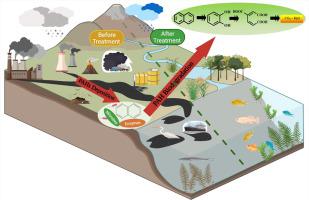Bioresource Technology ( IF 9.7 ) Pub Date : 2021-10-12 , DOI: 10.1016/j.biortech.2021.126121 Arfin Imam 1 , Sunil Kumar Suman 2 , Pankaj K Kanaujia 3 , Anjan Ray 3

|
Polycyclic aromatic hydrocarbons (PAHs) are hazardous environmental pollutants with widespread and well-recognized health concerns. Amidst more than a hundred known PAHs, 16 are categorized as priority pollutants. Use of widely diverse biological machinery comprising bacteria, fungi, and algae harnessed from contaminated sites has emerged as an ecologically safe and sustainable approach for PAH degradation. The potential of these biological systems has been thoroughly examined to maximize the degradation of specific PAHs by understanding their detailed biochemical pathways, enzymatic system, and gene organization. Recent advancements in microbial genetic engineering and metabolomics using modern analytical tools have facilitated the bioremediation of such xenobiotics. This review explores the role of microbes, their biochemical pathways, genetic regulation of metabolic pathways, and the effect of biosurfactants against the backdrop of PAH substrate structures.
中文翻译:

多环芳烃降解的生物机制:综述
多环芳烃 (PAH) 是有害的环境污染物,具有广泛且公认的健康问题。在一百多种已知的多环芳烃中,有 16 种被归类为优先污染物。使用广泛多样的生物机制,包括从污染场地利用的细菌、真菌和藻类,已成为一种生态安全和可持续的多环芳烃降解方法。通过了解其详细的生化途径、酶系统和基因组织,已经彻底检查了这些生物系统的潜力,以最大限度地降解特定多环芳烃。使用现代分析工具的微生物基因工程和代谢组学的最新进展促进了此类异生物质的生物修复。这篇综述探讨了微生物的作用、它们的生化途径、











































 京公网安备 11010802027423号
京公网安备 11010802027423号